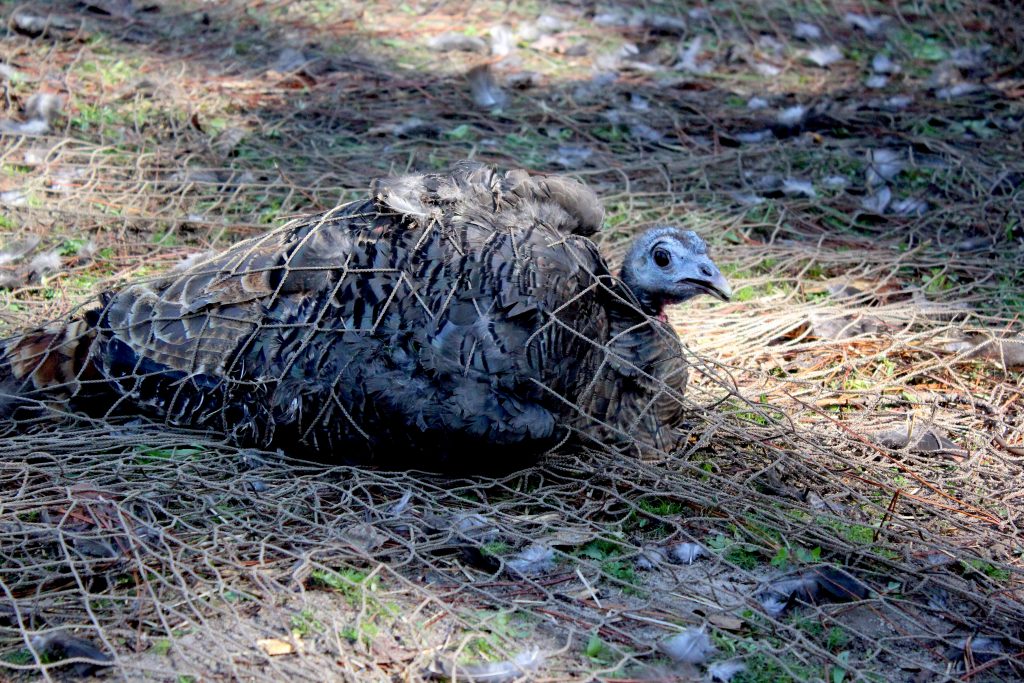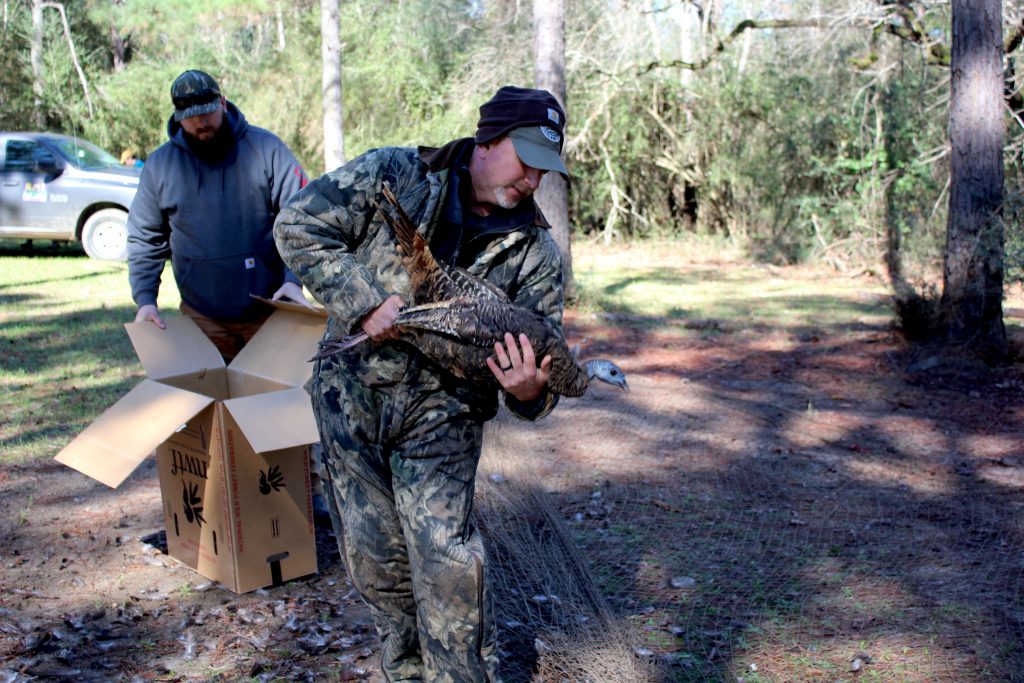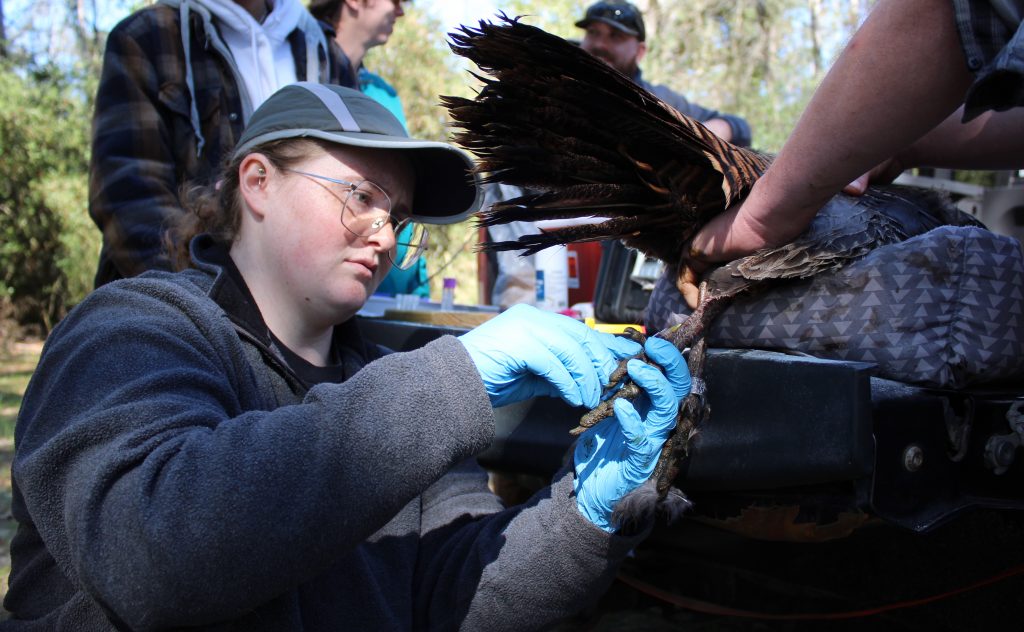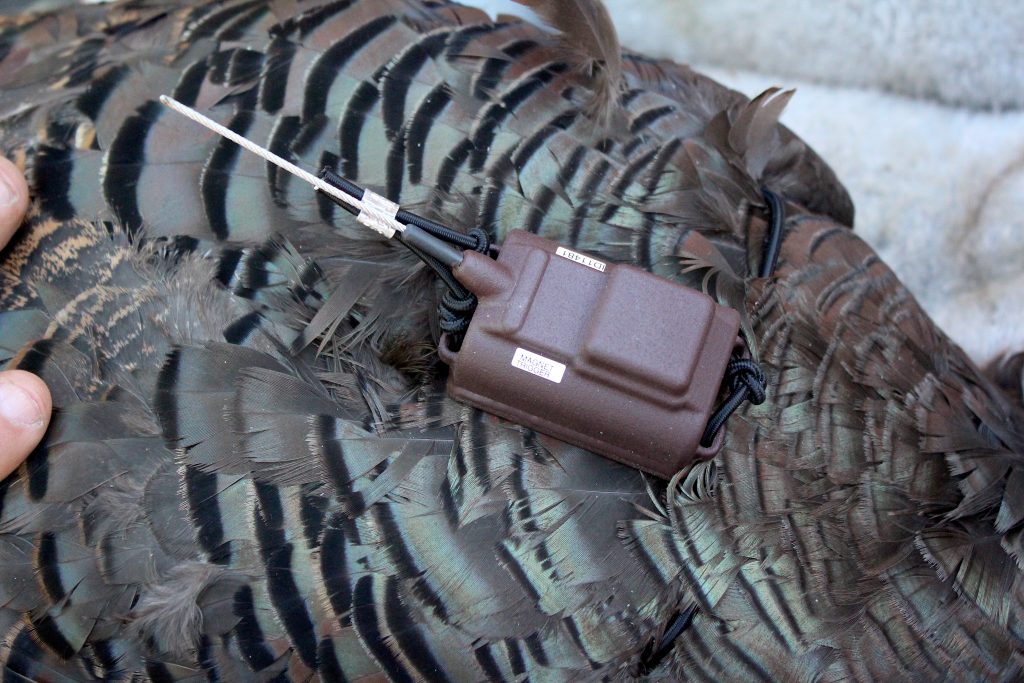Understanding the Impact of Hurricane Disturbance on Wild Turkey Habitat
“This is the first time we’ve been able to study wild turkeys like this as major changes are occurring across a large area. Most of the time it’s a controlled burn here and some timber harvest there. This one, however, is due to the storm impacting a huge area and we’re hoping this can give us insight as to how turkeys respond to these kinds of changes.”
Boom!
An explosion sounded in the forest of west-central Louisiana on a cold, January morning earlier this year.
It shook the very ground we stood on and echoed in a loud, haunting fashion.
“That’s not what we’re waiting for,” said Andy Byers, a graduate research assistant for Louisiana State University. “That was from Fort Polk. They’re testing munitions or something over there.”
A group of us had been warming our hands around a fire on private property, telling fishing and hunting stories and awaiting the sound of a cannon net to sound off nearby.
I had been on a turkey capture before and thought if that was the sound we were waiting for, we might find nothing but feathers and spurs in the woods. Cannon nets are set with a much lighter charge with the aim of capturing turkeys for research and translocation efforts.
A team from the Louisiana Department of Wildlife and Fisheries and the USDA Forest Service was in the woods, ready to fire the net over some Eastern wild turkeys that had been coming to a well-scouted site.
LDWF, LSU and Forest Service officials are partnering on a large-scale project to track turkeys in the Kisatchie National Forest and surrounding lands. Department of Defense officials are providing additional land access.
The challenge is capturing and fitting many birds with GPS units, but as with everything that comes with turkey research, it's a matter of hurry up and wait.
Hurry and hit the woods.
The team began setting the net hours before daylight.
Hurry up and wait nearby.
A group of us, including me in the role of the photojournalist, were told to gather at 7 a.m. in case birds were caught. I drove up two hours from southeast Texas.
At around 11 a.m., an alert was sent detailing another team on the same project caught birds a few miles away, so I took off to their location.

Upon arrival, I found the birds already in National Wild Turkey Federation holding boxes and being examined and fitted with GPS units by LSU graduate student Rachel Price and other team members.

Each bird is sexed and aged, has blood samples taken and a leg band attached, on top of being fitted with units that researchers can track via GPS as well as through a VHF frequency.
The birds are logged in the system and then released to help researchers understand their movements, life cycles and response to habitat degradation and enhancements.

“By the time we get through poking, prodding and collaring them, these birds are ready to fly away,” Price said. “They respond really well to it though, and for us, that means a lot more work begins throughout the year.”
That work includes tracking birds, examining nest sites and overall monitoring their life in these forests.
And there is a very specific reason for that.
In the fall of 2020, Hurricane Laura devastated the region, damaging more than 10,000 acres in the Kisatchie National Forest alone. Forest Service officials were aggressive in wanting to use this as an opportunity to enhance forest management by debris removal, prescribed burns and other management strategies.
“This is the first time we’ve been able to study wild turkeys like this as major changes are occurring across a large area,” said Bret Collier, Ph.D., associate professor at LSU’s School of Renewable Natural Resources. “Most of the time it’s a controlled burn here and some timber harvest there. This one, however, is due to the storm impacting a huge area and we’re hoping this can give us insight as to how turkeys respond to these kinds of changes.”
Upon returning to the original rendezvous site, I learned there was going to be a switch. The team manning the net had been in the woods since before 5 a.m. and it was nearly noon. Another crew was going to take an afternoon shift.
Then a came a text from LDWF Resident Small Game and Wild Turkey Program Manager Cody Cedotal.
“We heard what might be turkeys. Give us a few minutes.”
Boom!
The cannon net sounded, and the team hurried into the woods to assist with removing the turkeys from the nets and to begin the examination and collaring process.
The GPS units signal one location every hour for most of the day and one at midnight to reveal roosting sites.

Photo by Chester Moore.
Photo by Chester Moore.
The units are invaluable in allowing researchers to narrow down nesting areas and feeding zones for the poults.
Cedotal said working on the project with their partners is giving Louisiana an incredible look at turkeys and their population dynamics in the Bayou State.
“We are hoping to identify those factors that are most important to sustaining/increasing turkey populations in Louisiana,” he said “Ultimately we want to be able to better manage turkey populations and habitat for wild turkeys throughout the state.”
It is also making discoveries that could aid turkey management around the nation.
“This is a whole lot of hard work but very rewarding, and these kinds of partnerships are key to moving forward with conservation for wild turkeys and their habitat,” he added.
What makes that possible is not only strategic partnerships and funding but months of scouting, observing and monitoring.
And it’s all for the goal of better understanding America’s greatest game bird.
CONNECT WITH US
National Wild Turkey Federation
770 Augusta Road, Edgefield, SC 29824
(800) 843-6983
National Wild Turkey Federation. All rights reserved.
